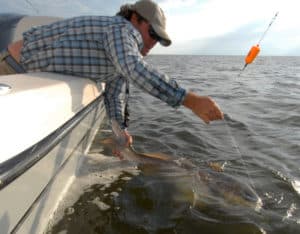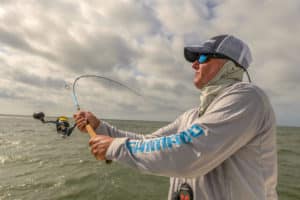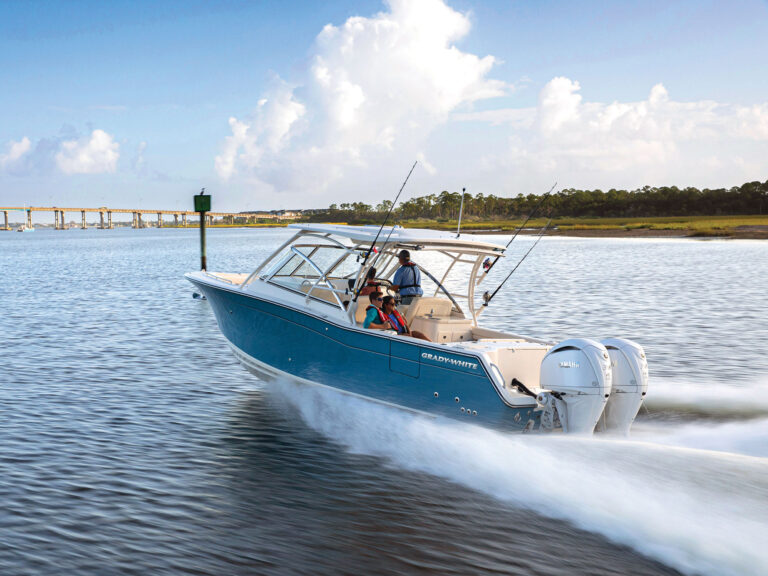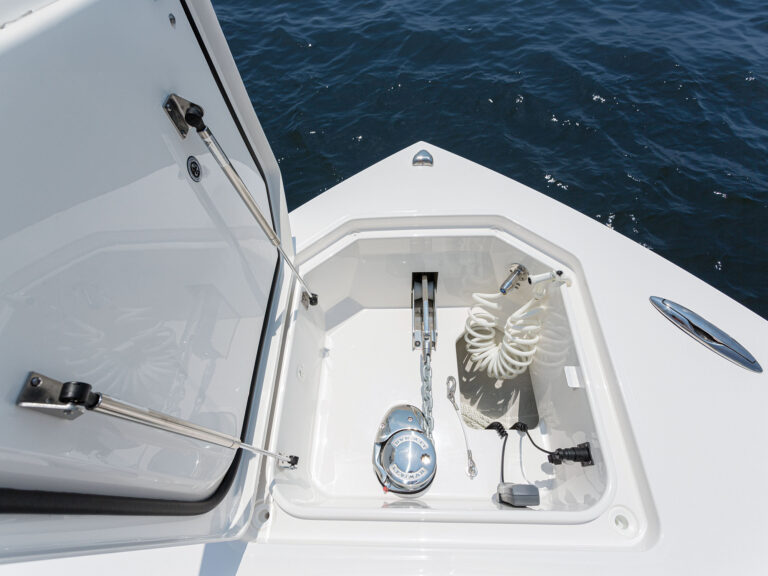
Catching red snapper is easy. In fact, some grouper fishermen will tell you that it’s too easy because the aggressive snapper will get to their baits before a grouper can even think about eating them. Catching trophy red snapper is another story. Yes, anglers can and sometimes do luck into a 20-plus-pounder or even a 30-pounder, but to consistently catch the big girls, success typically depends on three factors: Fishing the right spot with the right tackle and optimal bait, says Capt. Judy Helmey of Savannah, Georgia.
Top Places to Catch Big Red Snapper
When Helmey guides anglers for big red snapper fishing, she typically fishes what are known as the snapper banks, located 28 to 35 miles offshore. When she gets there, Helmey looks for a very specific type of bottom in 90 to 115 feet.
“I fish isolated areas that I call ‘cities,'” says Helmey, who first fished many of the areas with her father, Moose, who was a charter captain. As she got into the business, she discovered additional cities, which describe areas of natural bottom rising 5 to 6 feet above the surrounding sand. These red snapper fishing locations almost always hold big red snapper, along with cubera snapper, groupers, amberjack, and cobia. Cities have the highest population of fish compared with lower-profile areas on the snapper banks. Helmey has about 40 years’ worth of detailed fishing records, which helps her decide which cities to visit.
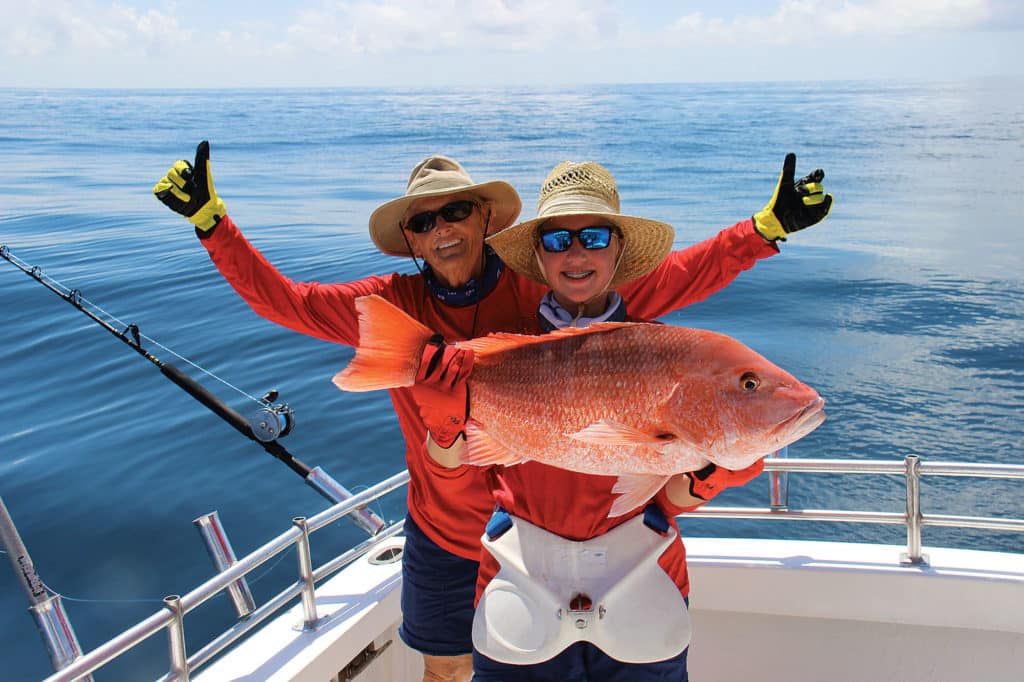
A little farther up the coast, Capt. Mark Brown fishes a variety of spots for red snapper out of Mount Pleasant, South Carolina. A former member of the South Atlantic Fishery Management Council — which regulates red snapper and other species in federal waters — Brown says the red snapper population has increased since he moved to the Charleston area from Daytona Beach, Florida, in 1986.
“With the closed and shortened seasons, the population expanded. Next thing you know, we were seeing them scattered in places we’d never seen them,” Brown says. “Now there are spots where you catch one, and other snapper follow it to the surface. The bulk of the big red snapper are 20 to 30 miles offshore, but I’ve caught them as close as 10 miles offshore. They never ever used to be in that close.”
When fishing for big red snapper, Brown anchors over natural bottom, artificial reefs and wrecks — any structure that holds baitfish — on his boat. Most of the trophy snapper his anglers catch come in 90 to 200 feet, but he has caught them as shallow as 50 feet. “To target trophies, I’d be looking at my historical fishing areas that I’ve gone to before, and probably take you to an area where I’ve caught a good number of big ones,” he says. “With red snapper, you’re going to see a variety of sizes. You’ll still see the smaller fish mixed in, but as a general rule of thumb, in 50 to 90 feet, the fish are smaller, anywhere from 1 to 4 pounds. In deeper water, they’re 5 to 10 pounds, but also 20 to 30 pounds.”
Gulf of Mexico Red Snapper Fishing

The Gulf of Mexico Fishery Management Council allows the five Gulf states to set recreational red snapper seasons in state waters, which extend 9 miles from shore, and federal waters, which extend out 200 miles. Capt. Chad Kinney, of Bamm Bamm Fishing Charters, runs 25 miles north or south from Port Mansfield, Texas, to fish state waters when the federal season is closed. Kinney, who works with fisheries scientists at Texas A&M University, says a 20-pound-class red snapper runs 30 to 34 inches. His biggest red snapper measured 44 inches; the state-record 38.75-pounder went 40 inches.
“It takes them a long time age-wise to get to that size, so you need to find a location that hasn’t been fished for a long time. You can fish out a spot really quickly,” Kinney says. “A common-knowledge spot, you might get a 5-pounder. Oil rigs still have big fish around them, but nothing like there used to be because so many people are fishing them.”
Kinney has caught big snapper around artificial and natural reefs in 30 to 95 feet in state waters, especially during winter, when he says the fish move into shallower water. But he generally fishes 350 to 400 feet in federal waters, which can be a 50-mile run from his marina. Many of his best trophy-snapper spots feature hard bottom with some coral that he discovered by trial and error. Kinney says anglers should look for small rises and contours on their bottom machines, and adds that a hard bottom will usually show up as orange or yellow on the screen. Mark the areas you find, then fish those areas to determine which ones hold big snapper.
“It takes a lot of hours and trials to find out what is and isn’t productive [for real sows],” he says.“ With big fish, structure size doesn’t seem to matter as much. Smaller structure holds bigger fish; a lot of boaters run over it without noticing. I’ve got plenty of spots like that.”
Louisiana and Alabama Red Snapper Fishing
Capt. Tommy Pellegrin, of Houma, Louisiana, who fishes state and federal waters in the Gulf for red snapper, has guided anglers to numerous IGFA fly-rod world records. “Experience helped a lot because I knew where the bigger ones were,” he says.
“Rule No. 1, no matter what kind of fish you’re after, fish where the fish are. If you want to catch a big red snapper, don’t go fishing the schools of little ones. Size classes all school together, so don’t fish in a spot dominated by a three-year-old size class if you want to catch a 20-year-old fish.”
He relies on his depth finder to search for big snapper, noting that the larger fish will be oriented well above an area of bottom relief that might be only 2 feet high. Relatively speaking, explains Pellegrin, a big snapper shows up on his Lowrance sounder as a 1-inch line that arcs slightly compared with a straight quarter-inch line for a smaller snapper. He adds that most of the time, his depth finder marks only a couple of big fish.
“The key to finding the bigger fish is looking not for a school of fish, but for individual fish,” Pellegrin says. “The big ones don’t school tight; they’re big and bold. The bigger fish don’t need as much protection, so you might have them 10 to 20 feet apart. There might be 50 of them, 10- to 25-pound fish, but they’re not snuggled up against each other, so you’re looking for one or two fish.”
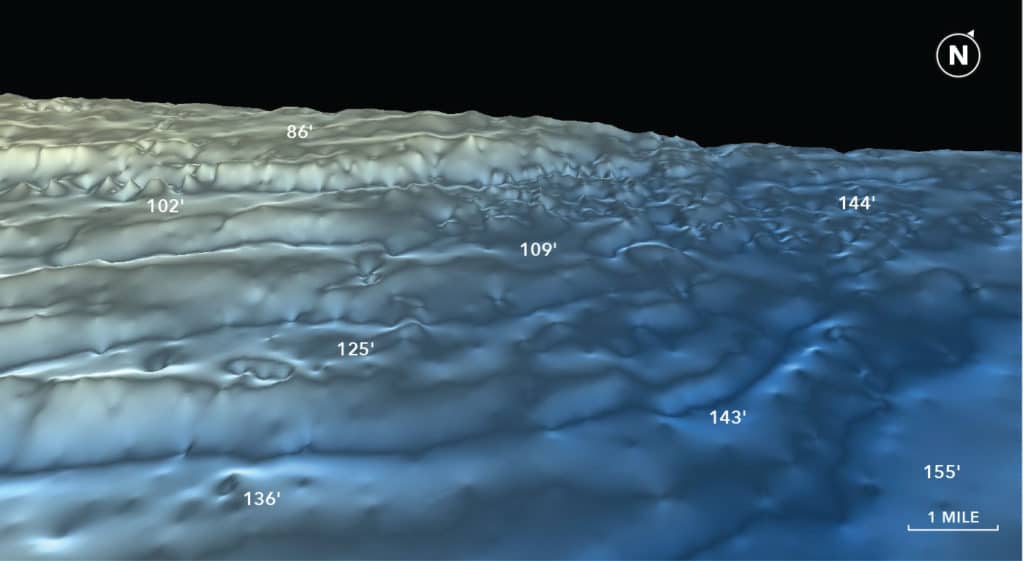
Like Mark Brown in South Carolina, Capt. Johnny Greene, of Intimidator Charters in Orange Beach, Alabama, has seen a dramatic improvement in Gulf snapper stocks. “Twenty years ago, there weren’t any snapper,” says Greene, whose biggest customer-caught snapper was a 38-pounder. “Now it’s a great fishery for a beginner.”
Greene advises anglers to target trophy snapper around the state’s abundant artificial reefs. He’d also fish several of them instead of hammering the big fish on one reef. Greene says that on an 80-foot reef, the big snapper will be suspended at 30 or 40 feet. “The smaller guys stay close to the wreck for protection. The bigger guys aren’t worried.”
Kinney notes that big snapper might not be right above the bottom structure, so he’ll drift past an area until he stops catching fish, then he goes “a little farther in case they’re off the reef.”
Best Red Snapper Baits
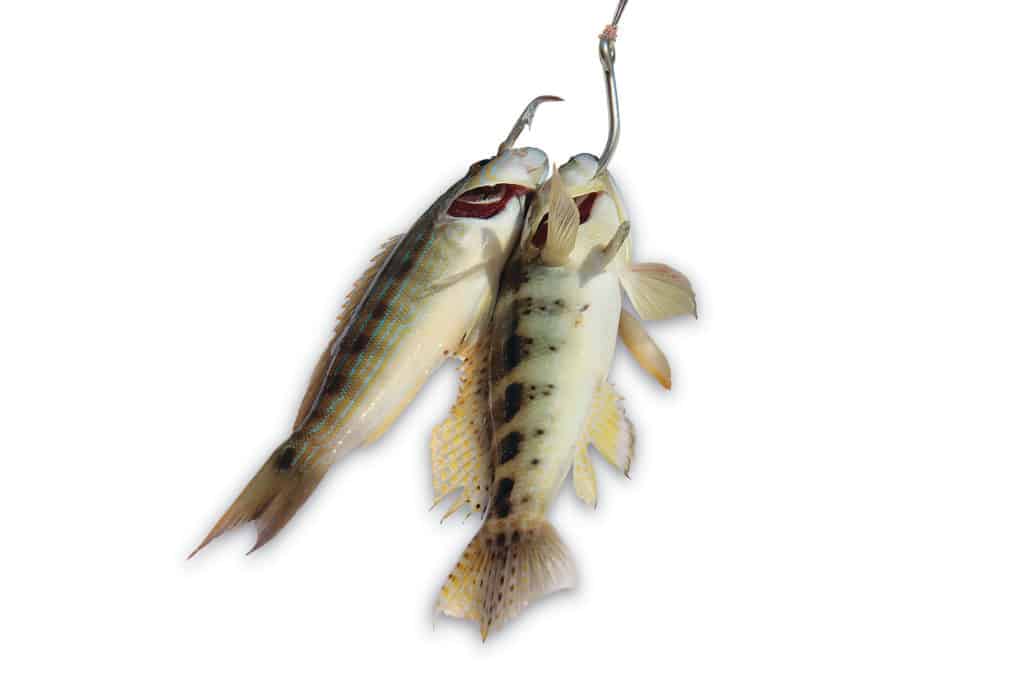
Red snapper feed aggressively, so how to catch red snapper might be as easy as dropping bait to the bottom. But when smaller snapper are grabbing everything first, Greene switches to whole Boston mackerel as red snapper bait, which are sold at area tackle stores. For a red snapper fishing rig, he puts an 11/0 Mustad 39960 circle hook through the bottom of the bait’s mouth and out the top so the hook point is even with the eye sockets, which hides the hook and helps keep the bait on the hook when a snapper bites. Greene also cuts off the mackerel’s tail so it doesn’t act like a rudder.
“Typically, a dead bait will work fine,” says Greene, who also uses a whole northern mackerel or squid as a best bait for red snapper. “Big snapper aren’t picky — they’re like a fat boy at a buffet. We also use herring and cigar minnows or a butterflied blue runner.”
Pellegrin uses live pogies for bait, which he catches in the passes between the barrier islands with a cast net. He’ll also trade “sodas” with the crews of shrimp trawlers in exchange for their bycatch. The best bait for red snapper might be anything found locally. “One of the best baits for big snapper is a big ribbonfish, 1½ to 2 feet long. Hook it through the eyes because a snapper’s going to eat it head-first. But a 6-inch live pogy is just as good as anything,” says Pellegrin, who fishes both baits on a 7/0 Mustad circle hook. That’s his best hook for red snapper.
Big Baits Catch Big Red Snapper

When she targets trophy red snapper out of Key West, Florida, Capt. Natalie Rarick loads up on live bait, then runs 30 to 50 miles west to fish ledges, shipwrecks, big coral heads, and rockpiles in 200 to 300 feet.
“Generally, a live bait produces the bigger red snapper,” says Rarick, whose favorite red snapper baits are threadfin herring, goggle-eyes and blue runners. She says a 7-inch bait is ideal, fished on an 8/0 circle hook. “Dead bait will catch 5-pound snapper,” Rarick adds.
She modifies her live baits by clipping the ends of their tails so they’re easier for a big snapper to eat. “If the bait makes it to the bottom, we lock up the reel so we can see if the snappers are on the bottom. As the boat drifts, the bait will come up in the water column.”
When he’s trophy hunting, Brown uses a variety of dead baits off Charleston, South Carolina, which he says are always available, and occasionally a diamond jig. “Anything from squid to cigar minnows, menhaden, mullet, pinfish and even cut mackerel.”
Helmey prefers to go after big snapper with live bait: cigar minnows and sardines that her customers and crew catch on Sabiki rigs, and sand perch, rock bass, and tomtates, which are known locally as ruby red lips, that her customers catch on two-hook rigs. She notes that those baits will also catch small snapper, which is why she focuses on fishing the “cities” where the big girls hang out.
Helmey hooks one, two or three baits through both lips on a thin-wire 12/0 to 14/0 circle hook. If the bite is slow, Helmey might butterfly a tomtate or a 12-inch vermilion snapper (legal size) and fish it on a circle hook or a 3-ounce hair jig, which the trophy fish find appealing when they don’t want to chase a live bait.

